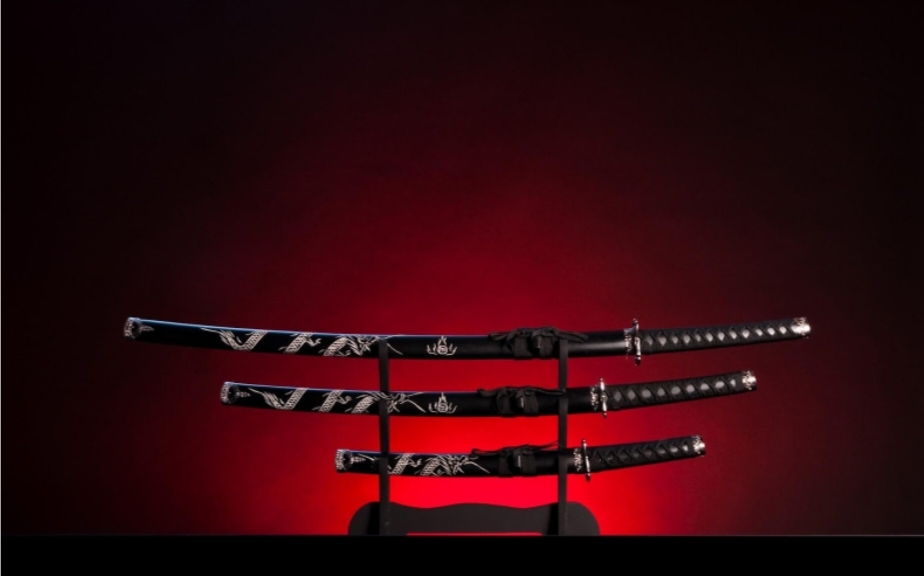In the realm of blades, one weapon stands out above the rest—the legendary Japanese katana. With its curved blade and rich history, the katana has captured the imagination of people around the world.
But what makes this sword so special? Join me as we explore the intricacies and allure of the Japanese katana.
Origins of the Katana
The history of the katana traces back to feudal Japan, where it emerged as the weapon of choice for samurai warriors. Initially, katana swords were straight, but over time, they evolved into the curved blades we know today.
This evolution was driven by the need for a more effective cutting edge in close combat situations.
Crafting the Perfect Blade
Crafting a Japanese katana is a meticulous process that requires both skill and patience. Swordsmiths, known as “Tosho,” carefully forge each blade using traditional techniques passed down through generations.
The combination of high-carbon steel and precise tempering results in a blade that is both sharp and resilient, capable of slicing through armor with ease.
The Art of Swordsmanship
The mastery of the katana goes beyond its physical construction; it lies in the skill of the swordsman. Samurai warriors dedicated their lives to the art of swordsmanship, honing their techniques through rigorous training and discipline.
The katana became an extension of the samurai’s spirit, reflecting their character and prowess on the battlefield.
Symbolism and Significance
The katana holds deep symbolism in Japanese culture, representing honor, loyalty, and the samurai’s code of Bushido. It is not merely a tool of warfare but a symbol of identity and heritage.
The intricate designs etched onto the blade often tell stories of valor and heroism, further enhancing its significance.
Legendary Katana Masters
Throughout history, there have been legendary swordsmiths whose craftsmanship elevated the katana to new heights. Masters like Masamune and Muramasa are revered for their skill and innovation, with their blades commanding awe and admiration to this day.
Their contributions to the art of sword-making continue to inspire swordsmiths and enthusiasts alike.
Modern-Day Reverence
Despite the passage of centuries, the reverence for the katana remains strong in modern Japan. Ceremonies and rituals honoring the sword’s legacy are still practiced, keeping the spirit of the samurai alive.
Additionally, martial arts schools continue to teach the ancient techniques of kenjutsu, ensuring that the art of the katana is passed down to future generations.
Collecting and Preserving Katana
For collectors and enthusiasts, owning a katana is akin to possessing a piece of history. Authentic swords, crafted by skilled artisans, are highly sought after and can fetch substantial prices.
However, preserving these artifacts requires careful maintenance and conservation efforts to prevent degradation over time.
Popular Culture Influence
The influence of the katana extends beyond Japan’s borders, permeating popular culture around the globe. From movies and literature to video games and anime, the katana has become a symbol of strength, honor, and resilience. Iconic characters wielding katana swords have captured the hearts and imaginations of audiences worldwide, further cementing the sword’s status as a cultural icon.
FAQs
- Are katanas still used in modern combat?
While katanas are no longer used in contemporary warfare, they are still practiced in traditional martial arts and occasionally used for ceremonial purposes.
- What is the significance of the katana’s curve?
The curvature of the katana blade allows for more efficient cutting and slicing motions, making it a formidable weapon in close combat situations.
- How can I tell if a katana is authentic?
Authentic katanas are typically accompanied by certificates of authenticity and exhibit specific characteristics such as a differential hardening line (hamon) and traditional hilt construction.
- Can anyone learn to wield a katana?
Learning to wield a katana requires dedication, discipline, and proper training under the guidance of a qualified instructor. While anyone can learn the basics, mastery of the art takes years of practice and commitment.
- What is the lifespan of a katana?
The lifespan of a katana depends on various factors such as its construction, usage, and maintenance. With proper care, a well-made katana can last for generations, serving as a testament to the enduring legacy of this iconic weapon.
Embark on a journey through time and tradition as we unravel the mystique of the Japanese katana. From its ancient origins to its enduring legacy in modern culture, the katana continues to captivate and inspire, embodying the spirit of the samurai for generations to come.



